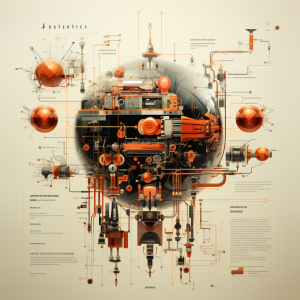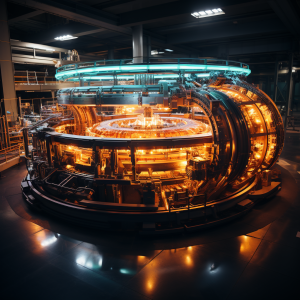
What is the difference between nuclear fission and fusion
Nuclear fission and nuclear fusion are two distinct types of nuclear reactions, which involve changes in the nucleus of an atom. The key difference between them lies in their mechanism and the effect of the reaction: fission is the splitting of a large atom into smaller ones, while fusion is the combining of smaller atoms to form a larger one. Both reactions result in a significant release of energy due to the conversion of mass into energy, but they’re used for different purposes and have different implications.
Nuclear Fission
The concept of nuclear fission was developed in the late 1930s, when German physicists Otto Hahn and Fritz Strassmann performed an experiment that led to the discovery of fission. Later, Lise Meitner and Otto Frisch provided the theoretical explanation for their experimental results.
Nuclear fission is a reaction in which the nucleus of a heavy atom, such as uranium-235 or plutonium-239, splits into two or more smaller nuclei along with the release of a large amount of energy. This process often also releases several free neutrons. The reaction begins when a heavy nucleus absorbs a neutron, becoming unstable and splitting into two roughly equal parts, often accompanied by the emission of two to three more neutrons.
A chain reaction can occur if these additional neutrons cause fission in other atoms. If the reaction is uncontrolled, it results in a nuclear explosion, as in atomic bombs. If the reaction is controlled, it can be used to produce a steady output of energy, which is the basis for nuclear power generation in reactors.
The energy released in a fission reaction is millions of times greater than that released in chemical reactions. However, fission also results in radioactive waste, which poses serious storage and environmental issues.
Nuclear Fusion
Nuclear fusion, on the other hand, involves the combination of two light atomic nuclei to form a heavier nucleus. This is the process that powers the sun and other stars. The most common fusion reaction in stars involves the isotopes of hydrogen, deuterium and tritium, combining to form helium and a neutron.
In theory, fusion has significant advantages over fission. It uses abundant sources of fuel, produces no long-lived radioactive waste, and carries less risk of accidents or weapon proliferation. However, achieving nuclear fusion for practical energy production is a massive technological challenge.
To overcome the strong electrostatic repulsion between the positively charged nuclei, the conditions for fusion must be extremely high temperatures (millions of degrees) and pressure. In these conditions, the matter forms a state known as plasma. Keeping plasma stable and hot enough for a sufficient amount of time is the main challenge in achieving controlled nuclear fusion.
Several experimental approaches are being pursued to achieve controlled fusion, such as magnetic confinement (in devices like tokamaks and stellarators) and inertial confinement (using lasers or ion beams). As of now, we have not yet been able to create a controlled fusion reaction that outputs more energy than it consumes.
Summary
In summary, nuclear fission and fusion are powerful reactions that convert mass into energy, but they differ fundamentally. Fission is the splitting of large atoms, produces harmful radioactive waste, but is technically easier to achieve and is currently used in nuclear power plants and weapons. Fusion is the combination of small atoms, promises a virtually limitless, clean source of energy, but remains a technological challenge we have not fully overcome. The understanding of these nuclear reactions not only plays a vital role in energy production but also enhances our understanding of the natural processes occurring in the universe, including the reactions that power the stars.




